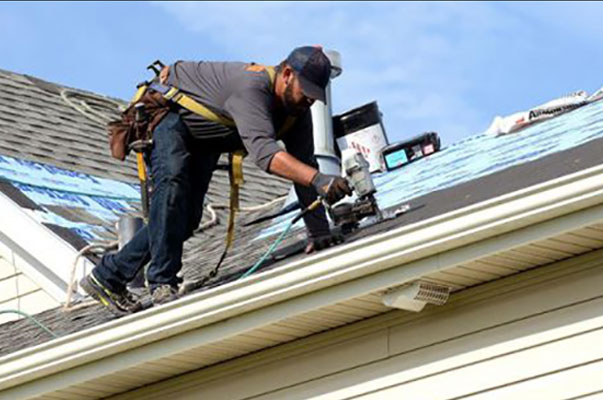Protecting Your Treasure Valley Investment
Your roof is your home’s first line of defense against Boise’s unique four-season climate. From intense summer sun and high winds to heavy winter snowfall and hail, your roof endures a lot. Choosing the right Boise roofing contractor is one of the most important decisions you’ll make as a homeowner. A quality installation protects your property, enhances curb appeal, and provides peace of mind. A poor choice, however, can lead to costly repairs and endless frustration.
Finding a trustworthy, skilled, and reliable contractor can feel overwhelming. This guide provides the essential steps and key qualifications to look for, ensuring you partner with a professional who will get the job done right the first time.
Key Factors for Selecting Your Roofing Pro
1. Verify Registration and Insurance
This is the most critical first step. While Idaho does not require a state-specific roofing license, all contractors must be registered with the Idaho Contractors Board. A reputable contractor will readily provide their registration number. Furthermore, insist on seeing proof of both general liability insurance and workers’ compensation. This protects you from any liability in case of accidents or property damage during the project.
2. Prioritize Local Experience
A local contractor understands the specific challenges of roofing in the Treasure Valley. They are familiar with local building codes, weather patterns, and the best materials to withstand Idaho’s climate. Companies with a physical office and a long-standing presence in communities like Boise, Meridian, and Eagle are invested in their local reputation and are accountable to their clients. They’ll be there to honor warranties should any issues arise.
3. Check Their Reputation and Past Work
A proven track record is a strong indicator of reliability. Look for a contractor with consistent positive online reviews on platforms like Google or the Better Business Bureau. Don’t just rely on online feedback; ask for a list of recent local references you can contact. A confident contractor will be proud to share examples of their completed residential roofing and commercial projects.
4. Get a Detailed, Written Estimate
Never accept a verbal quote. A professional roofer will provide a comprehensive, itemized written estimate that details the full scope of the project. This document should include:
- A full description of the work to be done.
- Specific materials to be used (brand, type, color).
- Costs for labor, materials, and permits.
- An estimated start and completion date.
- Payment terms and schedule.
- Details on cleanup and debris removal.
Comparing detailed estimates from multiple contractors helps you make an informed decision based on value, not just the lowest price.
5. Inquire About Warranties
There are two types of warranties: one for materials and one for workmanship. The manufacturer backs the material warranty, while the contractor provides the workmanship warranty. A reputable contractor will offer a solid warranty on their installation, guaranteeing their work against errors. Be sure you understand the terms, duration, and what is covered under both warranties before signing a contract.
6. Assistance with Storm Damage and Insurance
In Boise, wind and hail damage is a common reason for needing a new roof. An experienced contractor should offer thorough roof inspections to identify storm damage and have a deep understanding of the insurance claims process. Look for a team that can help you navigate your roof insurance claims, making a stressful situation much easier to manage.
Red Flags to Avoid
Just as important as knowing what to look for is knowing what to avoid. Be cautious of any contractor who:
- Uses high-pressure sales tactics or pushes you to sign a contract immediately.
- Asks for full payment or a very large deposit upfront before any materials arrive.
- Provides a vague or non-itemized estimate.
- Offers an unusually low bid, which could indicate subpar materials or uninsured labor.
- Cannot provide proof of registration, insurance, or a list of local references.
Ready for a Hassle-Free Roofing Experience?
Your home is your most significant asset. Don’t leave its protection to chance. Team Construction is a locally owned and operated Boise roofing contractor dedicated to quality workmanship, transparent communication, and complete customer satisfaction. We are fully registered, insured, and ready to help with everything from a minor roof repair to a full replacement.
Frequently Asked Questions
How often should I have my roof inspected in Boise?
It’s recommended to have your roof professionally inspected at least once a year, ideally in the spring or fall. You should also schedule an inspection after any major weather event, like a hailstorm or severe windstorm, to check for hidden damage.
What are common signs that my roof needs repair or replacement?
Common warning signs include missing, cracked, or curling shingles; significant amounts of shingle granules in your gutters; water stains on your interior ceilings; sagging areas on the roof deck; and visible leaks in the attic.
Can you help with my insurance claim for storm damage?
Yes. Experienced, full-service contractors like Team Construction often have specialists who guide homeowners through the entire insurance claims process. This includes documenting the damage, meeting with the adjuster, and ensuring the scope of work is accurately represented to your insurance provider.
How long does a typical roof replacement take?
The timeline for a roof replacement depends on the size and complexity of your roof, the materials being used, and the weather. However, for an average-sized home in Boise, a professional crew can often complete a full replacement in 1 to 3 days. A good contractor will provide a clear project timeline before starting.
